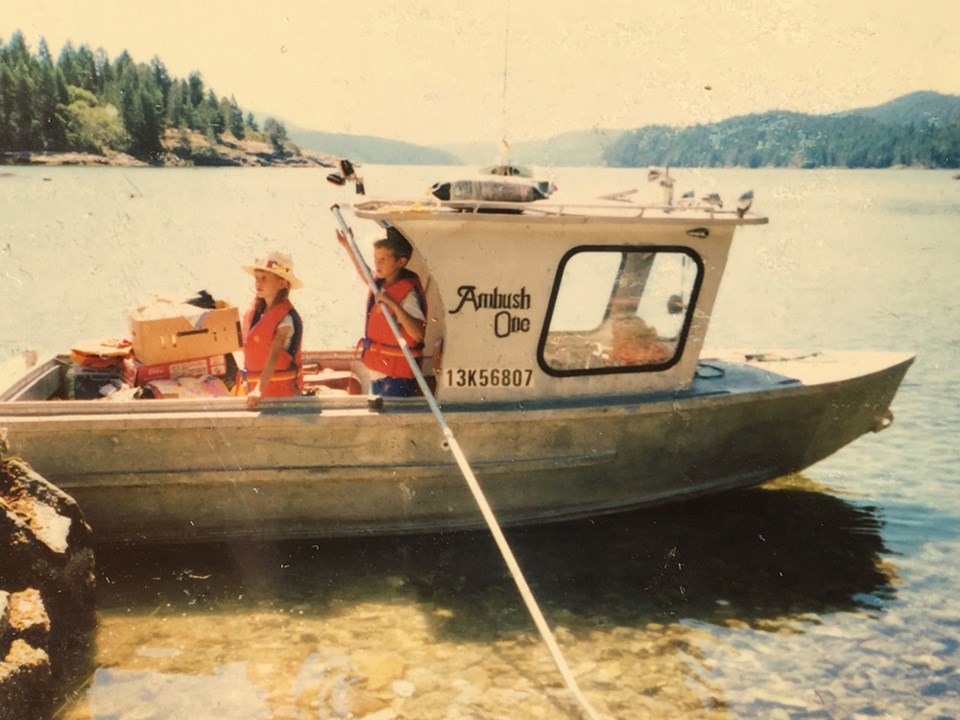Chapter 10 recap: Linda and Wayne’s world turned upside down when they became full-time oyster farmers, a profession conducted mostly during winter in the middle of the night when tides were low and oyster meat was at its best. Farming oysters was time consuming work requiring great patience and physical effort, so they didn’t need any extra agitations. But they were about to show up in human form.
As the years wound on, Linda and Wayne continued to work their oyster farm, expanding from the beaches to offshore floats and rafts up and down their lease. Floats weren’t impacted by the tides. They grew oysters from larvae, spatfall and seed to full grown shells on underwater trays and tubes, while still harvesting the beaches.
At the time, Linda could sell their oysters for about $3 per dozen. If they made their weekly goal of collecting 500 dozen, or 6,000 oysters, that meant they could reel in about $1,500 per week. Oyster season could stretch out to about 20 or 30 weeks a year in Desolation Sound, which meant they could make up to $40,000 in a really good year. Once, they topped $50,000.
Linda grew to love and respect the oyster, considering it the perfect food: delicious and packed with proteins, nutrients, minerals and Omega-3 fatty acids. Eating oysters did everything from lowering blood pressure to boosting the immune system, not to mention the positive growth on the libido.
According to Linda, oysters are thee organic superfood, encased tightly in their own hard cases that keeps the meat fresh for days. Eventually, Linda would sell millions of oysters, from the BC coastal waters she called home, to the rest of the outside world.
When Linda hit her thirties, she also became proactive in organizing her inlet community. The oyster farmers of Okeover Inlet and Desolation Sound formed their own nonprofit group called AMMA, which stood for Active Malaspina Mariculture Association. Linda would serve as its president for almost 20 years. Not only that, she also became the elected president of the strata council for over a dozen years, representing the 38 lots of my dad’s original development, Malaspina Estates, upon which both our cabins stood.
Back on the oyster farm, the most persistent problem Linda and Wayne faced was poaching. Under the cover of night, poachers would sneak onto Linda and Wayne’s leased beaches, including Stopford Point, a site containing several ancient Tla’amin Nation fish traps and tiered clam gardens that were still very fertile.
One night, shortly after Linda and Wayne had returned to their cabin from a pick at about three in the morning, another oyster farmer named Ed motored up and called out to them: “Hey Linda! Wayne! You got poachers over at Stopford Point, eh?”
Dark pursuit
Despite being exhausted from their night’s pick, Wayne left Linda and their dog Laz at the cabin and wasted no time in scrambling back down the hill. Sick of getting ripped off, he jumped into their new-to-them boat, the Ambush One, a beat up, extremely cool, 17-foot aluminum speed boat with a big, 115-horsepower outboard and a small, open-ended cabin just big enough for a steering wheel and two people.
The Ambush One had some serious credentials: before Linda and Wayne managed to buy it, the Ambush One was a stunt boat for the world famous hit CBC TV show The Beachcombers.
As if reenacting a Beachcombers episode in the middle of the night, Wayne raced over to Stopford Point and caught the poacher in the act in Wayne’s flashlight beam, right on their beach, stuffed gunny sack in hand.
The poacher shielded his face from Wayne’s flashlight beam and jumped into his much smaller aluminum boat with his stolen goods. He took off, roaring full speed into the night, down the inlet, heading for the government wharf.
Usually when they spotted poachers, Linda and Wayne were in their big, heavy herring skiff, which couldn’t catch the smaller, speedier boats. Not on this night. Wayne pushed the throttle down hard and charged forward into the dark like an angry bear.
The chase was on, and the Ambush One’s stint as a stunt boat wasn’t over.
The poacher quickly realized he was being followed by a much faster boat. He could hear its guttural roar gaining on him rapidly. That’s when the poacher pulled an unexpected move; he cut his engine and stopped his boat cold, in the inky darkness, in the middle of the inlet.
Wayne didn’t realize the poacher’s boat had come to a standstill until it was too late. Wayne’s boat was going way too fast; there was no way he could stop in time. And so Wayne and the Ambush One smashed right into the back of the poacher’s boat, sliding right up and over top of it.
This outrageous nighttime escapade led to criminal charges, a court case and a highly unlikely outcome that would put Linda in a very awkward position. You’ll read the rest of that story in the next chapter of Wild Pick: the life and adventures of Linda Syms, oyster farmer of Desolation Sound.
Grant Lawrence is the author of the new #1 bestselling book Return to Solitude. He considers Powell River and Desolation Sound his second home. Grant’s book and Linda’s two books: Salt Water Rain and Shell Games, are for sale at Pollen Sweaters in Lund, and Pocket Books and Marine Traders in Powell River.



